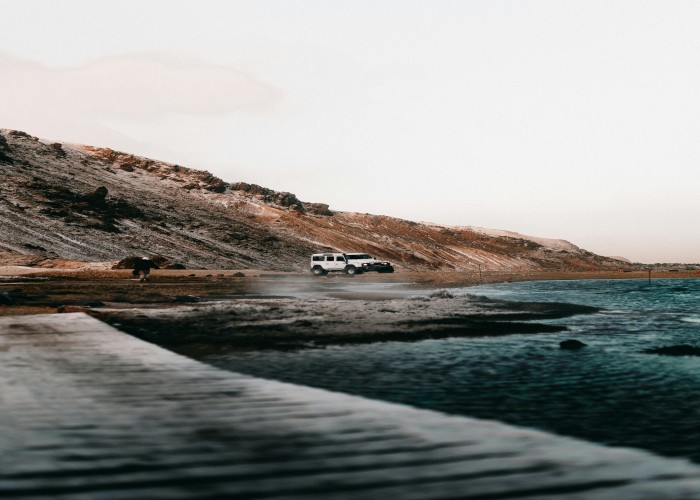Rota Vicentina’s Fisherman’s Trail is a scenic coastal hiking route in southwestern Portugal. It spans dramatic cliffs, sandy beaches, and traditional fishing villages. Stretching along the Alentejo and Algarve regions, it is known for its unspoiled landscapes, rugged ocean views, and a classic, authentic trekking experience. Though part of a larger network called Rota Vicentina, the Fisherman’s Trail specifically follows the shoreline, offering salt air, seabirds, and a timeless feel of coastal Portugal. Rota Vicentina Fisherman’s Trail Trek.
Best Time to Visit
When planning your trek, consider these seasonal highlights:
- Spring (March to May): mild temperatures, blooming wildflowers, fewer crowds
- Early summer (June): pleasant weather, longer daylight, good for longer stages
- Autumn (September to October): warm sea, harvest season, quieter paths
Avoid mid‑summer (July and August) when engine heat and high season crowds peak. Winter months (November to February) can bring rain and short daylight, though fewer hikers and dramatic skies may appeal to seasoned adventurers.
How to Reach (Train / Road / Air)
Getting to the Fisherman’s Trail involves a few steps depending on your starting point:
- By air: Fly into Lisbon (Portugal’s main international hub) or Faro (closer to the trail’s southern end). From Lisbon, trains or buses serve towns like Sines or Porto Covo. From Faro, regional buses connect to Odeceixe or Aljezur.
- By train: Trains run along the coast from Lisbon southward. You can disembark at coastal towns and take a short taxi or bus ride to trailheads.
- By road: Renting a car offers flexibility. The A2 motorway from Lisbon heads south, with exits to coastal towns near the trail. From Faro via the IC1 or local roads you can reach trail gateways as well.
Entry Fees and Permits
The Fisherman’s Trail is a public footpath, so generally there are no entry fees or permits required. If you stay in national or natural parks that manage access points, costs may apply for parking or visitor centers—these are usually modest and subject to change. Plan based on “no fee expected but local charges possible” guidelines.
Food Availability and Meal Options During the Trek
Along the route, you’ll find small cafés, tascas (simple eateries), and village shops offering snacks, coffee, and traditional dishes. Meal options include:
- Fresh seafood like fish stew, grilled sardines, or shellfish
- Simple lunch boxes, sandwiches, fruit, bread, cheese, and olives
- Supermarkets in larger towns for self‑catering provisions
- Some guesthouses or small hotels offer breakfasts or packed lunches for trekkers
Always carry water and snacks for stretches between villages.
Packing List and Essentials
Pack smart for coastal terrain and changing weather:
- Comfortable hiking shoes or boots with good grip
- Lightweight walking poles (optional but helpful on cliffs)
- Quick‑dry, layered clothing and a waterproof jacket
- Sunhat, sunglasses, sunscreen
- Hydration pack or water bottles
- Snacks: energy bars, nuts, dried fruit
- Daypack with first‑aid kit, map or trail guide, phone, and charger
- Swimwear if you plan seaside stops
- Light towel, basic toiletries, hat for shade
- Flashlight or headlamp for early or late stages
Safety Tips and Local Regulations
Stay safe and protect the environment:
- Stick to marked trails to avoid cliff edges
- Pay attention to weather forecasts—storms bring rough seas and slippery paths
- Hike in daylight, moderate your pace, and know nearest emergency numbers
- Respect private land signage—don’t enter fenced off areas
- Carry a basic first‑aid kit and know turtle or wildlife nesting zones if relevant
- Follow “leave no trace”: carry out your litter and minimise noise
Tips for Beginners or First‑Time Visitors
If this is your first coastal trek, these suggestions will help:
- Choose shorter daily stages (10‑15 km) to start
- Stay in towns along the route for flexible exit options
- Hike with a companion or group for safety and company
- Allow rest days — exploring local villages can add cultural value
- Practice carrying your full pack on shorter walks beforehand
- Expect uneven terrain—allow extra time and take care near cliffs. Rota Vicentina Fisherman’s Trail Trek.
Local Customs or Cultural Etiquette
When walking through local communities:
- Greet with “Bom dia” or “Boa tarde” in shops and cafés
- If entering small tascas, it’s polite to remove hats and wait to be seated
- Respect quiet hours, especially around siesta time (mid‑afternoon)
- Ask before photographing locals or inside homes or private spaces
- In restaurants, tipping is appreciated but modest (5‑10 %)
Frequently Asked Questions (FAQs)
How long is the Fisherman’s Trail?
Approximately 120 km (75 miles) spread over multiple stages along the coast. Rota Vicentina Fisherman’s Trail Trek.
How difficult is it?
Moderate—some steep climbs and descents on cliff paths; not technical, but requires good fitness.
What is the daily duration?
Expect 4 to 7 hours of walking per day, depending on distance and pace.
What is the maximum altitude?
The trail stays close to sea level; cliffs may rise tens of meters (up to 100‑150 m) briefly.
Are restrooms available?
Yes, in cafés, restaurants, guesthouses, and some public facilities in towns. Not available on remote stretches.
Do I need prior hiking experience?
No. Beginner hikers can succeed with preparation and realistic plans.
Are there water sources along the route?
Yes. Tap water is available in villages and cafés.
Is navigation difficult?
Trail is well‑marked with yellow signs; a simple guidebook, map, or GPX helps.
Summary and Final Thoughts
The Fisherman’s Trail in Portugal offers a memorable coastal trek through diverse landscapes, seaside villages, and quiet beauty. By choosing spring or autumn, planning your route and logistics, packing sensibly, and respecting local way of life, even first‑time long-distance hikers from the USA, UK, Australia, or Germany can enjoy this trail safely and richly. Whether you hike short sections or complete the full route, the experience delivers natural wonder, cultural insight, and timeless coastal charm. Rota Vicentina Fisherman’s Trail Trek.






Leave a Reply